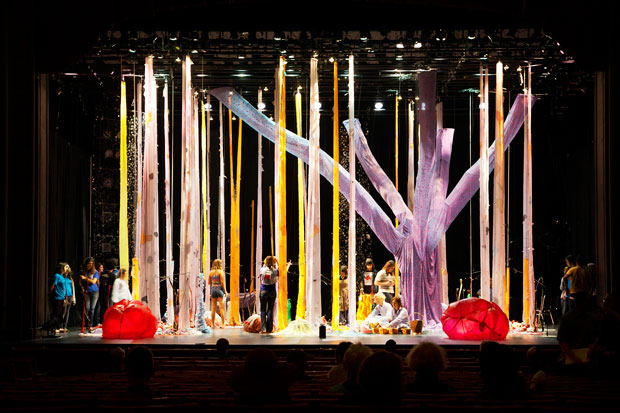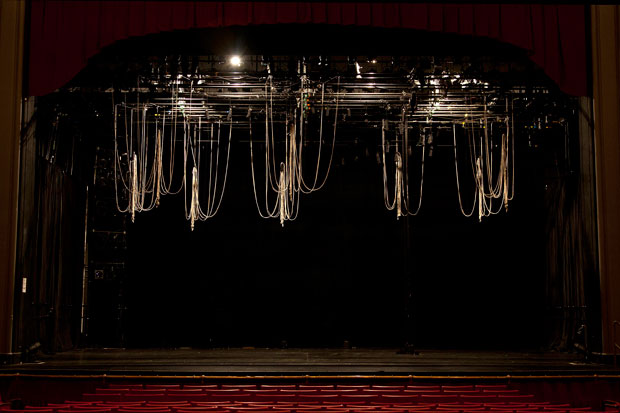
More than 30 artists and volunteers transformed Page Auditorium into a colorful and complex ecosystem this weekend.
In three separate performances of New Orleans-based artists Katie Pearl, Lisa D'Amour and Shawn Hall's How To Build A Forest, Duke students and faculty meticulously constructed a "forest" out of common materials over the course of eight hours.
The piece was inspired by the environmental and man-made disasters of Hurricane Katrina and the 2010 Gulf of Mexico oil spill. Pearl and D'Amour designed the performance as a way to "rebuild" all the ecosystems lost in these crises.
Upon entering Page, guests were greeted by "rangers" who gave them background information on the forest and answered their questions about the ecosystem. Guests also received field guides, which traced the origins of the forest's components. "Builders" clad in light blue jumpsuits took breaks from installing the display to chat with audience members. An hour into the show, guests of all ages, including groups from Durham elementary schools, were invited onstage.
The project was supported by Duke's Council for the Arts, the theater studies department and the Nicholas School of the Environment.
Theater Studies professor Jules Odendahl-James said How To Build A Forest was the perfect extension of Duke's interdisciplinary approach to education.
"Incorporating the art/science collaboration is very important for a research university," Odendahl-James said. "I liked this piece because it's informed by science but does not use scientific data. It also encourages people to get informed and see the connectedness of ecosystems without necessarily spelling all that out."
Second-year student Mao Hu, the show's assistant director, said he and many other student volunteers were drawn to this production because of the unusual level of audience interaction.
"How to Build a Forest is interesting because there are mechanisms to acclimate audience members to the project," Hu said. "People resolved to stay for just a few minutes and ended up staying hours."
Nicholas School professor Chris Erlien said audience interaction added to the production's accessibility.
"The fact that the audience in invited to interact with the installation by coming up on stage while the forest is being built [makes this piece a lot different from] a lecture or paper on sustainability," Erlien said.
The forest was built with materials as varied as vinyl records, rope, colorful fabric and metal wire.
After six hours of mostly silent building, the builders began chanting as they rapidly dismantled the world they had spent all afternoon creating. One builder delivered a final monologue before all the crew members stepped offstage. For first-year student Taylor Johnson, this final theatrical element and the show's visual components were memorable.
"The way they used art to send a message made it much more powerful than a pamphlet about how forests are being chopped down," Johnson said. "You actually get to see how this beautiful and mesmerizing world can disappear."
Below: A "before" image of the Page Auditorium stage prior to construction of the forest (above). Photos by Jon Gardiner/Duke University Photography.
